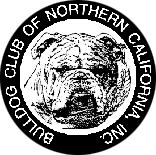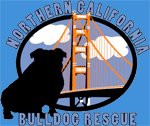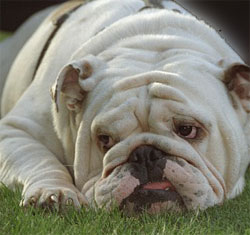


 |
 |
 |
Managing Post-Operative Pain"The California Bulldogge" Feature Article
|
||||||||||||||||||||||||||
Fig. 1: DRUGS USED TO MANAGE POSTOPERATIVE PAIN |
||
| Drug Class | Uses | Examples |
| Local anesthetics | Usually used intraoperatively to block pain in a local area | Bupivacaine Lidocaine |
| Alpha-2 agonists | Short-term analgesia and sedation | Dexmedetomidine Medetomidine Romifidine Xylazine |
| Opioids | Short-acting analgesics used primarily in hospital | Fentanyl Hydromorphone Morphine Tramadol |
| Anxiolytics | As anxiety can enhance pain, anxiolytics may be used before the pet's appointment or as a preanesthetic | Alprazolam Diazepam Midazolam |
| NSAIDs | For analgesia and anti-inflammatory effects | Carprofen Deracoxib Etodolac Firocoxib Meloxicam Tepoxalin |
Pain has traditionally been thought of in terms of its duration: acute or chronic. Another way to categorize pain is as 'adaptive' or 'maladaptive'. Adaptive pain occurs as a normal response to tissue damage and includes inflammation, which is seen after surgery. Adaptive pain can progress to maladaptive pain if it is not properly managed. If it continues unmanaged, it is more difficult to control.
When your pet is hospitalized, recovering from a painful procedure (Fig. 2), the veterinary team acts as advocates for the patient's comfort. Recognizing that a pet is experiencing pain can be challenging; signs of pain (Fig. 3) can be so subtle they are overlooked. The veterinary team will assess and monitor your pet's pain and then communicate clearly and in detail with the veterinarian for necessary treatment, perhaps medication and perhaps calming by interaction and/or handling. Once the pet is discharged, the veterinarian will communicate clearly with the pet owner as they hand back the role of advocate for the animal's comfort.
Fig. 2: POTENTIALLY PAINFUL COMMON HOSPITAL PROCEDURES(not a complete list) |
|
Fig. 3: RECOGNIZING POSTOPERATIVE PAIN |
Behavioral changes:
Physiologic changes:
|
It is critical that the owner follow instructions carefully for care and pain management. The veterinary team will explain medications and if necessary show how to give them. It is important that the pet be comfortable and for the owner to continue any pain medications as long as necessary, which may mean for more than just 1 or 2 days, depending on the procedure performed and the individual pet's tolerance to pain. With proper education and communication between clients and the veterinary team, pets can stay comfortable throughout the pre- and post-surgical process. Key to this process is paying attention to the behavioral and physical symptoms of the patient. In addition, when the patient goes home, the owner must keep in touch with the veterinary care givers if unusual symptoms arise. Although pain medication is necessary, please be aware all medications can have adverse reactions and you should consult your veterinarian if you have concerns.

Download Forms
»BCNC Membership Application (pdf)
Copyright 1999 - 2014 The Bulldog Club of Northern California, Inc. All rights reserved.